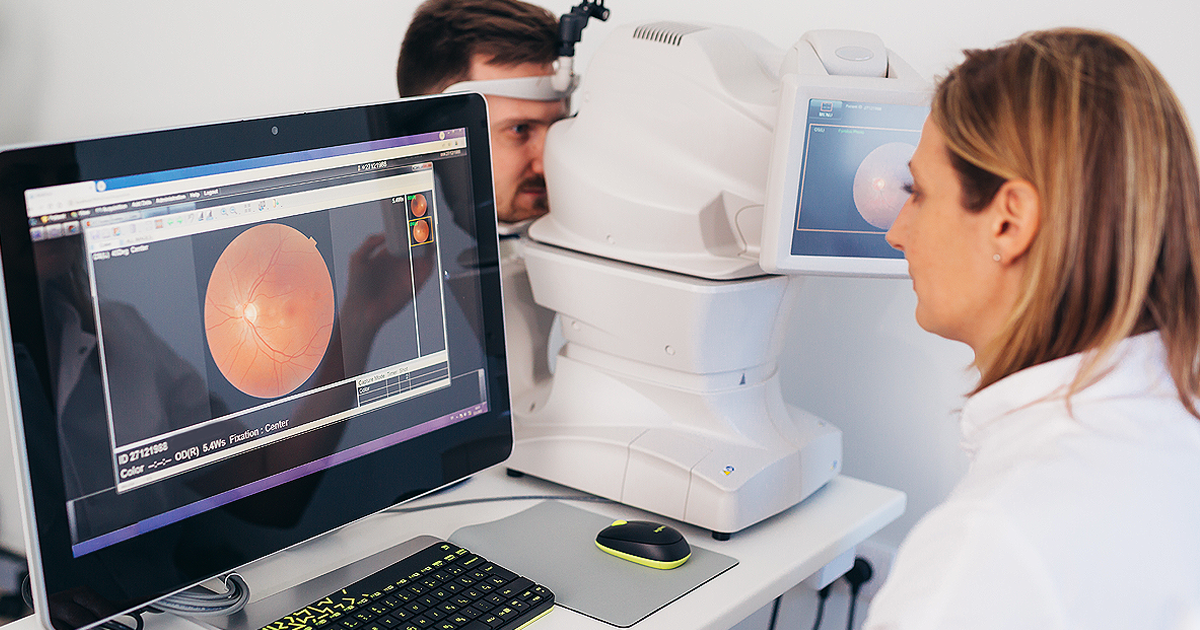The U.S. workforce is getting older. The number of working Americans over age 55 is projected to increase to 42.1 million in 2026 (up from 35.7 million in 2016). By 2026, aging workers will make up nearly one-quarter of the workforce.1 This trend can bring companies advantages such as experience and a strong work ethic, but it also has its challenges.
As workers age, they are more likely to experience health concerns, including vision issues. Vision benefits and annual eye exams enable vital preventive care for everyone, but having access to quality vision care is especially critical to those over 55 who have a higher likelihood of age-related vision complications.
Vision conditions affecting older workers
Older workers face various vision conditions and diseases that are less likely to impact their younger colleagues.
Blindness and vision impairment are most common among adults aged 50 years and older, who account for more than 80% of people with vision loss. As the workforce ages, the prevalence of vision impairment and blindness are projected to more than double over the next 30 years.2
Blindness and vision loss aren’t the only vision conditions threatening older workers; they also face common eye problems such as presbyopia, floaters and flashers, dry eyes and tearing. More serious eye diseases and disorders impacting aging adults include cataracts, glaucoma, age-related macular degeneration, diabetic retinopathy, retinal detachment, conjunctivitis, corneal diseases, eyelid problems and temporal arthritis.3

The effects of these conditions aren’t limited to vision loss. They can also lead to an increased risk of falls, cognitive impairment and dementia, depression, disability and loss of independence. That's why it's important to understand how to choose the appropriate lenses for aging eyes. Dr. Julie Hively, LensCrafters Optometrist, shares additional insight.
“Progressive lenses allow us to see multiple distances clearly when different prescriptions are needed for our distance, intermediate and near activities,” says Dr. Julie Hively, LensCrafters OD. “We most commonly see this need in middle-aged individuals when a natural condition called presbyopia occurs. Presbyopia refers to the gradual weakening of the focusing system within our eyes which generates the need for different prescriptions at different distances. Before the invention of progressive lenses, we required a different pair of glasses for each of these three distances! Progressive lenses can also be chosen for prescription sunglasses so clarity and convenience are not sacrificed when driving or spending time outdoors.”
Protect older workers with a comprehensive vision plan
While eye conditions and diseases become more prevalent with age, many can be prevented or corrected with services offered through a comprehensive vision plan. When evaluating vision care providers, consider the following benefits, as they have a direct impact on vision care and outcomes:
Eye exam frequency. Annual vision exams enable early detection and treatment of diabetes, high blood pressure, high cholesterol, heart disease, cataracts, glaucoma and other conditions. Identifying these conditions early can lead to more successful treatment.
Vision care network. A broad network of independent and national vision care providers makes finding care and using benefits easy. With convenient access to care, older employees can use their benefits where they want, when they want.
Employee communications. Communication materials developed specifically for aging workers educate them on age-related vision conditions and how to use their benefits. Employees who are informed about vision conditions are more likely to seek out care.
Discounts and promotions. Discounts and promotions help employees save on glasses, lenses, contacts and other materials so that they can keep more money in their pocket.
Vision plans help attract and retain older workers
Aging employees are the fastest-growing cohort of workers in almost every country. In an environment where job vacancies have outnumbered job applicants since 2018, older workers are likely to be in high demand.
Older workers carefully consider a company’s benefit offerings when weighing employment decisions, and a comprehensive vision plan is one way employers can set themselves apart from other companies wooing the same talent.
Given that aging employees have a higher risk for age-related vision problems, eye diseases and chronic conditions, it’s no surprise that they have a strong interest in vision benefits. In addition to helping older workers stay healthy, vision benefits can also help attract and retain experienced workers who bring years of knowledge, skills and experience to the workforce.
Encourage your employees to keep their aging eyes healthy by scheduling an eye exam—or visit eyemed.com.
••••
1. “Mining For Silver: Discovering Veins Of Innovation In Your Organization.” Forbes. March 2021
2. “Association between vision impairment and mortality: a systematic review and meta-analysis.” The Lancet. April 2021.
3. “Common Age-Related Eye Problems.” Cleveland Clinic. November 2020.




